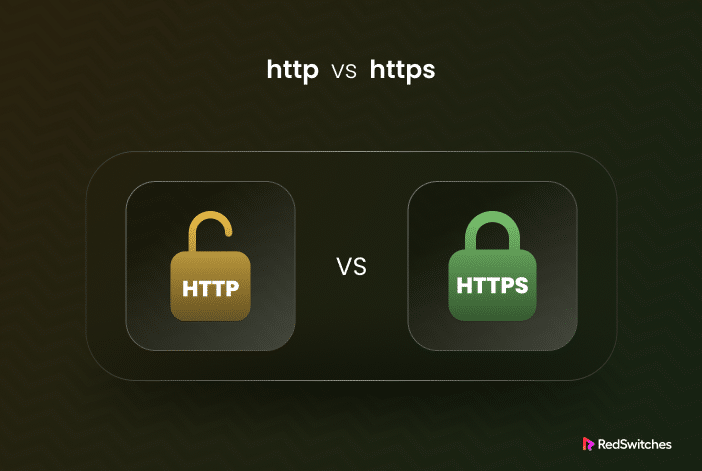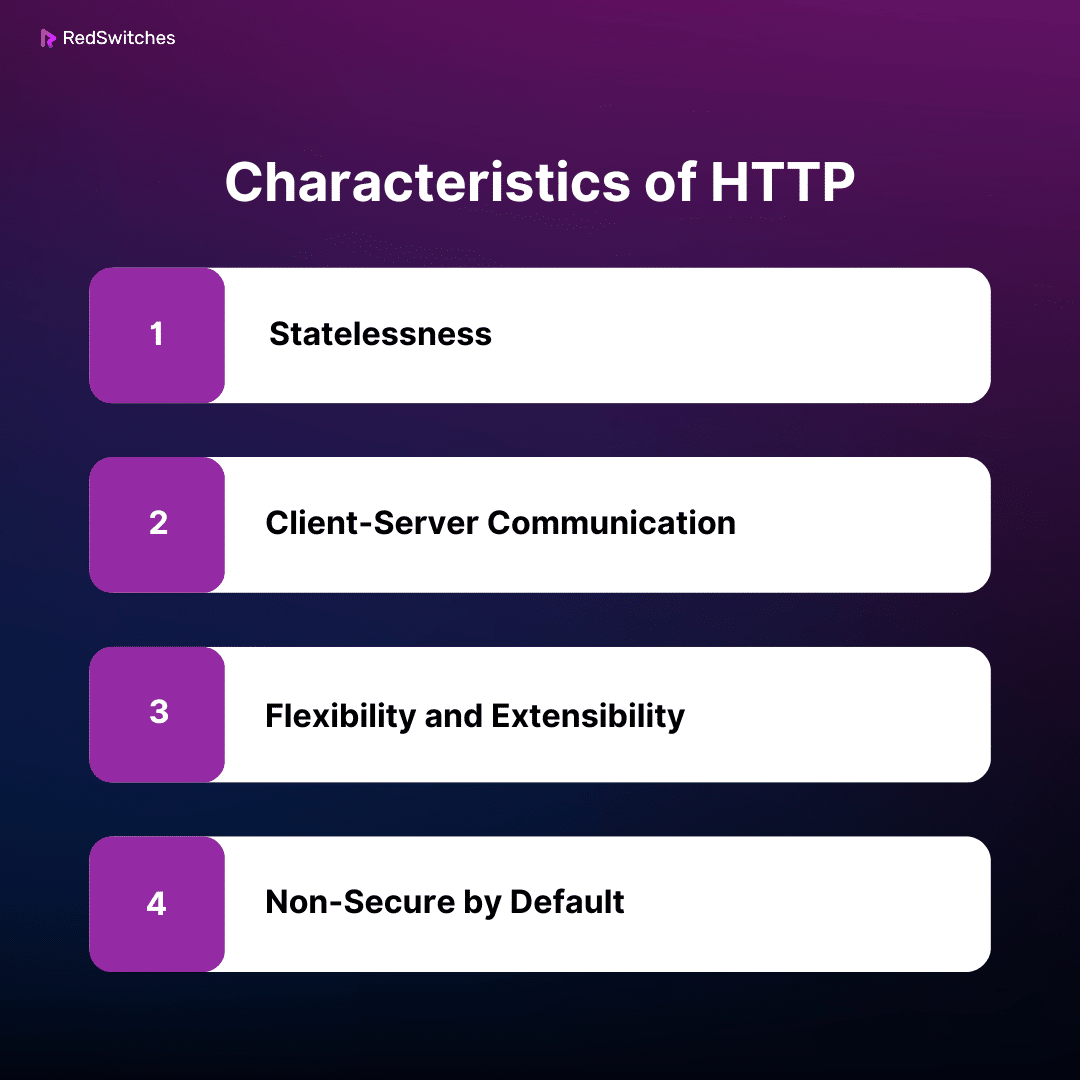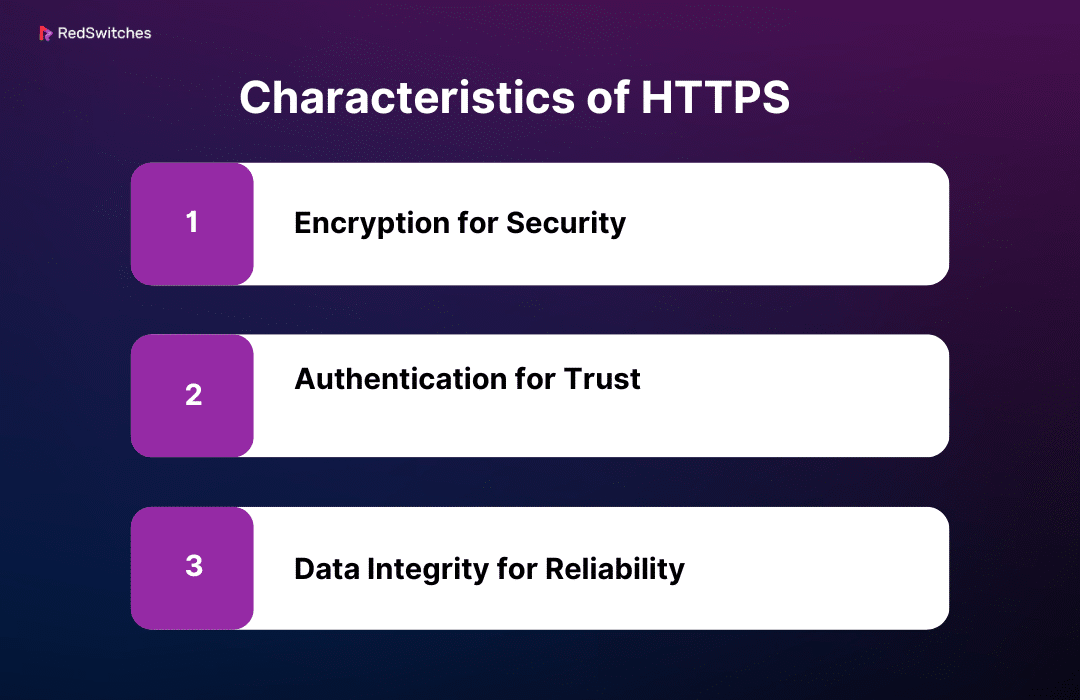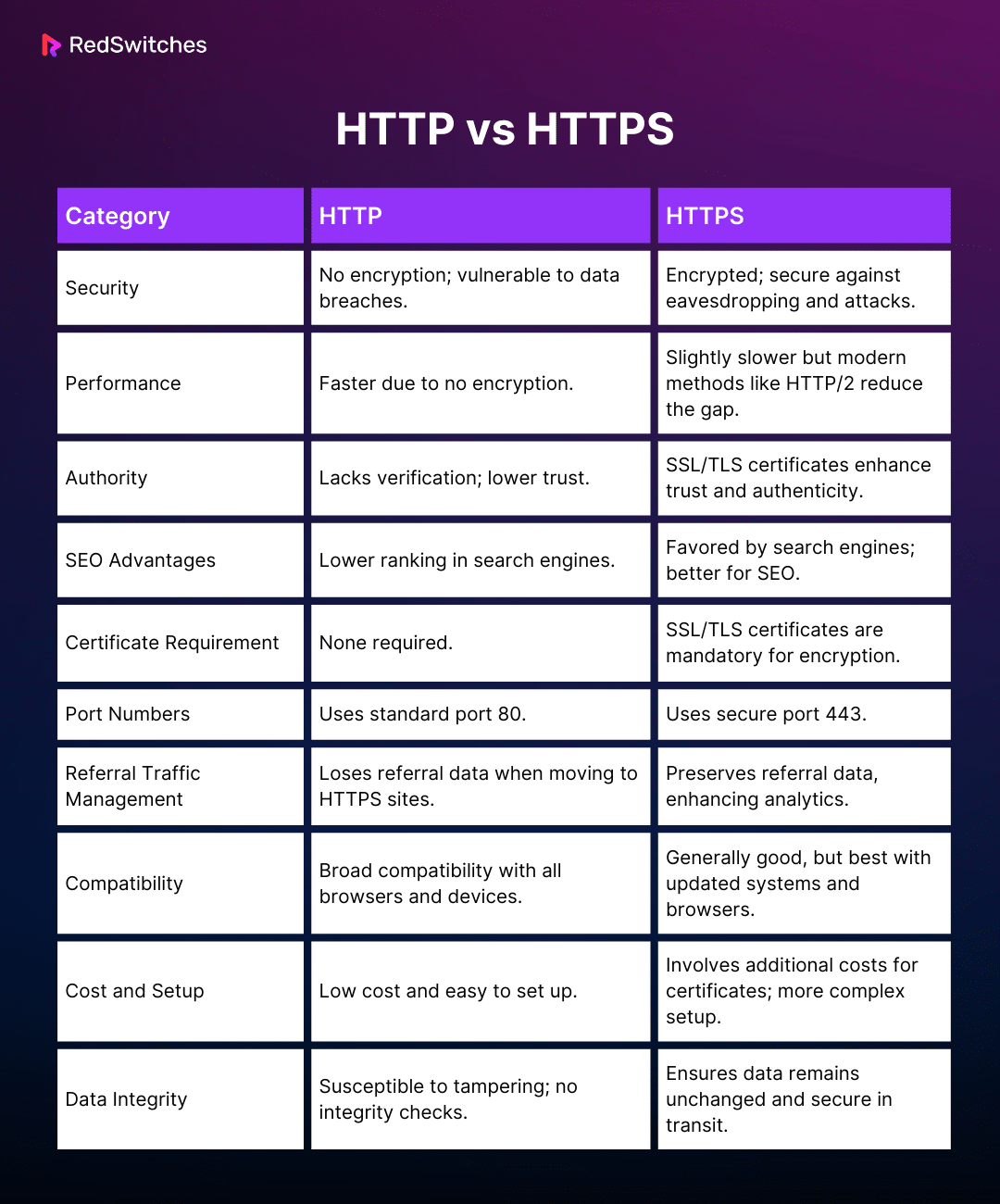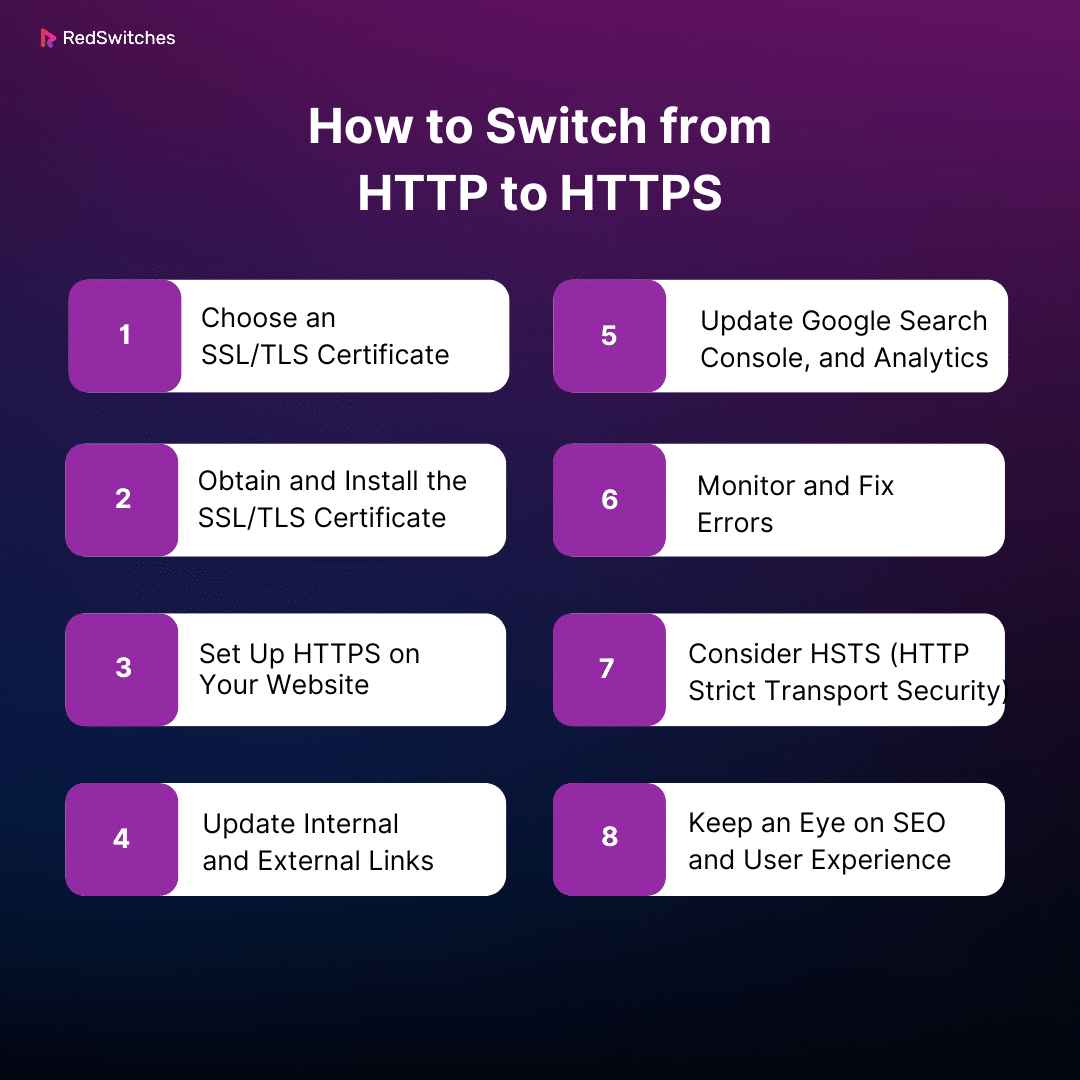Key Takeaways
- Over half of the top one million websites now use HTTPS, reflecting a shift towards enhanced online security.
- HTTP, the foundation of web communication, operates on a stateless model and lacks inherent security, sending data in plain text.
- HTTPS adds a layer of security to HTTP, encrypting data to protect against eavesdropping and tampering.
- HTTPS encrypts data during transmission, using SSL/TLS protocols, ensuring information remains unreadable to unauthorized parties.
- HTTPS authenticates websites and enhances data integrity, preventing users from falling prey to fraudulent sites and ensuring data remains unaltered.
- While HTTPS can slightly slow down web performance due to encryption, modern optimization techniques have mitigated this issue.
- HTTPS improves website authority and trustworthiness, with SSL/TLS certificates signaling a commitment to security.
- Google favors HTTPS websites in search rankings, indicating its importance for SEO and safer internet.
- Switching from HTTP to HTTPS involves choosing and installing an SSL/TLS certificate, configuring the server, and updating internal and external links.
- Implementing HTTPS enhances security, user trust, and SEO, making it a strategic move for a more secure and reliable online presence.
In the digital era, where our lives intertwine with the online world more than ever, the significance of internet security cannot be overstated. Imagine this: whenever you browse the web, enter your details, or make an online purchase, you’re walking through a virtual city. Much like any other, this city has its safe zones and high-risk areas. The key to navigating this city safely lies in understanding the HTTP vs HTTPS differences – the foundational protocols of the internet that determine the security of your online journey.
A recent analysis showed that more than half (51.8%) of the top one million websites globally automatically switch to HTTPS, marking a significant rise from a few years earlier.
This shift underscores a growing awareness and necessity for enhanced security in our online interactions. But what exactly are HTTP vs HTTPS, and how do they affect your online safety? In this comprehensive guide, we’ll delve into the world of these protocols, exploring their roles and differences and why the ‘S’ in HTTPS is more than just a letter—it’s your digital bodyguard.
Table Of Contents
- Key Takeaways
- What is HTTP?
- What is HTTPS?
- HTTP vs HTTPS – What’s the Difference?
- Security in HTTP vs HTTPS
- Performance and Analytics in HTTP vs HTTPS
- Authority in HTTP vs HTTPS
- SEO Advantages in HTTP vs HTTPS
- Certificate Requirement in HTTP vs HTTPS
- Port Numbers in HTTP vs HTTPS
- Referral Traffic Management in HTTP vs HTTPS
- Compatibility in HTTP vs HTTPS
- Cost and Setup in HTTP vs HTTPS
- Data Integrity in HTTP vs HTTPS
- How to Switch from HTTP to HTTPS
- Conclusion
- FAQs
What is HTTP?
Credits: Freepik
Understanding HTTP: The Foundation of Web Communication
HTTP, standing for Hypertext Transfer Protocol, serves as the fundamental framework for data exchange on the World Wide Web. This protocol is like the language that web browsers and servers use to communicate with each other. Whenever you enter a website’s URL in your browser or click on a hyperlink, HTTP fetches the web pages and resources for viewing.
Also Read How To Fix the “HTTPS Not Secure” Message in Chrome
Characteristics of HTTP
- Statelessness: HTTP operates on a stateless model, meaning each request from your browser to the server is independent. The server doesn’t remember any previous interactions, which simplifies the process and means it can’t store any information about your activities from one session to the next.
- Client-Server Communication: HTTP is based on a request-response model. Your web browser (the client) requests a server when accessing a webpage. The server processes the request and returns the necessary information.
- Flexibility and Extensibility: HTTP is flexible; it supports various types of data, from text to images and videos. Additionally, it’s extensible, meaning it can be expanded or customized with new methods and headers to meet evolving web needs.
- Non-Secure by Default: A notable aspect of HTTP is its lack of inherent security. Data is sent in plain text, which makes it vulnerable to eavesdropping and tampering.
How HTTP Works: A Step-by-Step Process
Credits: Freepik
- Initiating a Request: Everything starts with your action, like typing a website address in your browser. This action triggers an HTTP request to the server hosting the website.
- Request Breakdown: The HTTP request includes critical information like the HTTP version, the URL you want to access, the method (like ‘GET’ or ‘POST’), headers giving additional details, and sometimes a body with more data.
- Server Processing: The server receives your request, interprets it, and takes appropriate action, such as retrieving a webpage.
- Responding to the Client: After processing your request, the server sends back an HTTP response. This response contains a status code indicating whether your request was successful, response headers with extra information, and, usually, the content you requested.
- Closing the Connection: In HTTP/1.0, each request and response cycle would close the connection, requiring a new connection for each new request. HTTP/1.1 improved this by introducing persistent connections that enable multiple requests and responses through a single established connection.
HTTP is the protocol that made the World Wide Web possible, but it’s not without its shortcomings, especially regarding security. Its simple, stateless nature facilitates web browsing, but the lack of encryption in HTTP has led to the rise of HTTPS, its secure counterpart. Understanding HTTP and its mechanics is vital to appreciating how the web works and why there’s a growing shift towards more secure protocols.
What is HTTPS?
Credit: Freepik
HTTPS, for Hypertext Transfer Protocol Secure, represents a significant advancement in web communication, building upon the foundation laid by HTTP. It’s essentially HTTP but with a crucial layer of security. This protocol is integral to today’s internet, especially for protecting sensitive user data. When you visit a website and see a padlock icon in your browser’s address bar, it’s a sign that the site uses HTTPS, ensuring a secure connection.
Characteristics of HTTPS
- Encryption for Security: The standout feature of HTTPS is encryption. It scrambles data during transmission, so the information remains unreadable to unauthorized parties even if intercepted. SSL (Secure Sockets Layer) or its successor, TLS (Transport Layer Security), typically handles this encryption.
- Authentication for Trust: HTTPS also authenticates websites, proving they are what they claim to be. This is done through SSL/TLS certificates, verified by Certificate Authorities (CAs). This process helps prevent users from falling prey to fraudulent sites.
- Data Integrity for Reliability: Another critical aspect of HTTPS is data integrity. It ensures that the data sent and received has not been tampered with, maintaining the accuracy and reliability of the information exchange.
How HTTPS Works: A Closer Look
Credits: Freepik
- Initiating a Secure Connection: When you access an HTTPS website, your browser initiates a ‘handshake’ with the server. This handshake is key to establishing a secure connection.
- Exchange of Certificates: The server presents its SSL/TLS certificate to your browser. This certificate contains the public key necessary to start the encrypted session. Your browser verifies this certificate with a CA to ensure it’s valid and trustworthy.
- Establishing Encryption Keys: Once the certificate is verified, your browser and the server agree on encryption keys for the session. This involves complex cryptography, but they create a secret key that only they know, enabling secure communication.
- Encrypted Data Transfer: With the secure connection established, data transfer between your browser and the server is encrypted. Whether inputting your password, credit card details, or browsing, the data is coded so that only your browser and the server can decipher.
- Maintaining and Ending the Session: This encrypted session persists as you interact with the website. Once you’re done and close the connection, the session keys are discarded. New keys are generated each time you visit, making every session unique and secure.
HTTPS is now widely recognized as the standard for secure web browsing. It enhances HTTP by adding layers of encryption, authentication, and data integrity, essential for protecting user information and building trust in the digital world. Understanding how HTTPS works helps us appreciate the complexities of web security. It underscores the importance of using secure protocols in an age where data breaches and cyber threats are increasingly common.
Also Read Web Server vs Application Server: How To Pick The Right Platform For Your Operations
HTTP vs HTTPS – What’s the Difference?
What is the difference between HTTP and HTTPS? In the vast and intricate world of the internet, two protocols stand out as the pillars of web communication: HTTP and HTTPS. While they may seem similar, their differences are significant and pivotal in how we experience and interact with the digital realm.
Understanding these differences is a matter of technical curiosity and a crucial aspect of web security and user experience. This section will demystify these protocols, exploring how they work, their fundamental differences, and why they matter to website owners and users.
Whether you’re a tech enthusiast, a website owner, or just someone who browses the internet, grasping what is difference between HTTP and HTTPS is essential in today’s cyber-centric world.
Also Read: Unveiling the Hidden Risks of Dedicated Servers
Security in HTTP vs HTTPS
HTTP lacks encryption, making data vulnerable to interception and attacks, whereas HTTPS secures data transfer with encryption protocols, enhancing overall web security. This fundamental difference makes HTTPS essential for protecting sensitive user data.
HTTP: Vulnerable by Design
HTTP, standing as the original web protocol, has a critical flaw: it lacks built-in security measures. Data transferred via HTTP is sent in plain text, making it susceptible to cyber threats. This vulnerability exposes users to man-in-the-middle attacks, where an attacker intercepts the data exchange to steal or manipulate information. For instance, personal information, login credentials, and other sensitive data can be easily compromised on an HTTP site, especially when using public Wi-Fi networks.
HTTPS: A Fortified Protocol
In contrast, HTTPS incorporates robust security protocols, primarily through SSL/TLS encryption. This added layer of security encrypts the data in transit, making it indecipherable to unauthorized parties. HTTPS ensures that any information sent or received – personal details, financial transactions, or confidential communications – is securely encrypted. This encryption protects against eavesdropping and verifies the website’s authenticity, ensuring users are not victims of spoofing or phishing attacks.
Final Verdict
The primary distinction in the HTTP vs HTTPS comparison regarding security is clear: HTTPS provides a secure channel essential for protecting user data and maintaining privacy, while HTTP lacks these fundamental security features, leaving data exposed and vulnerable.
Performance and Analytics in HTTP vs HTTPS
HTTPS can impact website performance slightly due to encryption overhead, but modern optimization techniques mitigate this. In analytics, HTTPS ensures data integrity and privacy, which is not guaranteed with HTTP.
HTTP: Faster but Riskier
Historically, HTTP was known for its speed. Without encryption, HTTP requests and responses are processed more quickly. However, this speed comes at the cost of security. In the performance context, HTTP may seem advantageous, but it significantly compromises data integrity and confidentiality.
HTTPS: Secure with Modern Efficiency
Initially, HTTPS was perceived as slower than HTTP due to the extra steps involved in encryption and decryption. However, with technological advancements, this gap has significantly narrowed. Modern encryption algorithms and more efficient processing capabilities have made HTTPS almost as fast as HTTP. Furthermore, the introduction of HTTP/2, often combined with HTTPS, provides enhanced speed and improved performance through techniques like multiplexing and header compression.
Analytics Insight
Regarding analytics, HTTPS offers a more reliable and secure environment for data collection and user tracking. HTTPS websites can provide more accurate and secure analytics as encrypted data is transmitted. In contrast, HTTP sites are more susceptible to data interception and manipulation, potentially leading to skewed or compromised analytics.
Final Verdict
When comparing HTTP vs HTTPS in terms of performance and analytics, it’s evident that HTTPS offers a secure and efficient solution with its modern encryption standards. The marginal difference in speed is a small price to pay for the significant gains in security and data integrity that HTTPS provides.
Authority in HTTP vs HTTPS
HTTPS enhances a website’s authority and trustworthiness as it signals a commitment to security, a key factor in user trust and credibility. HTTP, lacking encryption, can diminish a site’s perceived reliability and authority.
HTTP: A Question of Trust
With HTTP, trust and authority are fundamental issues. Since HTTP lacks encryption and does not verify the identity of a website, it’s challenging for users to trust the authenticity of a site. This lack of trust can be especially problematic for websites that handle sensitive information. Users may hesitate to interact with or provide personal information to an HTTP site due to the inherent security risks.
HTTPS: Building Trust with Certificates
HTTPS significantly enhances the authority and trustworthiness of a website. This is achieved through SSL/TLS certificates, which serve as the website’s authenticity stamp. Certificates issued by Certificate Authorities (CAs) upon confirming a website’s ownership and authenticity are essential for HTTPS sites. When visiting an HTTPS-enabled site, users will notice a padlock symbol in their browser’s address bar, signifying the site’s security and verification. This level of authority is crucial for establishing trust, particularly for e-commerce sites, financial institutions, and any service that requires user credentials or personal data.
Final Verdict
In HTTP vs HTTPS, authority and trust are significantly skewed towards HTTPS. HTTPS provides a verifiable level of security and authenticity that HTTP cannot, enhancing user trust and a site’s perceived authority.
Also Read Difference Between SSL vs TLS: 2024’s Best Internet Security Protocol
SEO Advantages in HTTP vs HTTPS
HTTPS is a ranking factor for search engines like Google, giving HTTPS-enabled websites a potential edge in SEO over HTTP sites. This shift is part of a broader push towards a more secure internet.
HTTP: A Disadvantage in Rankings
Websites using HTTP are at a distinct disadvantage regarding Search Engine Optimization (SEO). Major search engines like Google have been vocal about the importance of website security, with HTTPS being a known ranking factor. An HTTP website will likely rank lower in search engine results than its HTTPS counterparts, impacting visibility and traffic.
HTTPS: A Boost in Search Rankings
Transitioning to HTTPS can provide a noticeable advantage in SEO. Since 2014, Google has considered HTTPS a ranking signal, favoring secure websites in search engine results. This preference is part of a broader push to encourage a safer internet. Websites that adopt HTTPS benefit from enhanced security and improved SEO, potentially leading to higher rankings, more traffic, and increased credibility.
Analytics and User Experience:
Beyond the ranking boost, HTTPS sites often provide better analytics, user experience, and critical SEO components. Secure sites are more likely to retain users, reduce bounce rates, and encourage transactions, positively influencing SEO metrics.
Final Verdict
Regarding SEO advantages in the HTTP vs HTTPS comparison, HTTPS emerges as the clear winner. It meets the security criteria set by search engines and contributes to a better overall user experience, leading to potential improvements in search engine rankings and website traffic.
Certificate Requirement in HTTP vs HTTPS
HTTPS requires an SSL/TLS certificate to establish a secure connection, whereas HTTP does not have such requirements. This certificate validates the website’s identity and enables encrypted communication.
HTTP: No Certificates Required
HTTP does not require any certificates to function. This simplicity is a double-edged sword; while it makes setting up an HTTP website straightforward and cost-effective, it lacks the security measures necessary for protecting user data. The absence of SSL/TLS certificates means no encryption or authentication is involved in the data transfer, leaving the communication vulnerable to interception and attacks.
HTTPS: Mandatory SSL/TLS Certificates
In contrast, HTTPS mandates using SSL/TLS certificates, which are essential for establishing a secure connection. These certificates serve two primary purposes: they encrypt the data transferred between the user and the website and authenticate its identity, assuring users that the site is legitimate and not a fraudulent replica. Obtaining an SSL/TLS certificate typically involves verification by a trusted Certificate Authority (CA), which can range from simple domain validation to more rigorous checks for extended validation certificates.
Final Verdict
The certificate requirement is a fundamental difference in the HTTP vs HTTPS comparison. HTTPS, with its mandatory SSL/TLS certificates, offers a secure and authenticated browsing experience, which HTTP, without any such requirement, fails to provide.
Port Numbers in HTTP vs HTTPS
HTTP typically uses port 80 for communication, while HTTPS uses port 443, a distinction that helps in routing web traffic securely for HTTPS and differentiating it from unsecured HTTP traffic.
HTTP: Standard Port 80
HTTP traditionally operates on port 80. In network communications, a port is a designated number that helps identify specific processes or types of network traffic. Port 80 is the default for HTTP traffic, which means that when a browser sends a request to an HTTP website, it uses this port number to transmit data.
HTTPS: Secured on Port 443
HTTPS, the secure version of HTTP, utilizes a different port – port 443. This distinction is crucial as it allows network devices to differentiate between secure (HTTPS) and non-secure (HTTP) traffic. When a browser communicates with an HTTPS website, it does so over port 443, ensuring the data is encrypted and securely transmitted.
Final Verdict
Port numbers play a significant role in distinguishing between HTTP and HTTPS. While HTTP uses port 80, HTTPS uses port 443, reflecting the fundamental differences in security and data handling between the two protocols. This distinction helps network traffic management and reinforces the security measures inherent in HTTPS.
Referral Traffic Management in HTTP vs HTTPS
HTTPS can more securely and accurately track referral traffic, as it preserves referrer data often lost when moving from a secure (HTTPS) to a non-secure (HTTP) environment.
HTTP: Loss of Referral Data
In the context of HTTP vs HTTPS, referral traffic management is critical. For HTTP websites, referral data can be lost when transitioning from an HTTPS to an HTTP site. This loss occurs because the secure HTTPS site does not pass along the referral information when referring traffic to an insecure HTTP site for security reasons. As a result, the traffic originating from HTTPS sites appears as ‘direct traffic’ in analytics tools when it lands on an HTTP site, leading to a lack of clarity in understanding traffic sources and user behavior.
HTTPS: Preserving Referral Information
On the other hand, HTTPS websites maintain the integrity of referral data. When an HTTPS site sends traffic to another HTTPS site, the referral information is preserved. This retention is crucial for accurate analytics and understanding the user journey across different websites. It allows website owners to track where their traffic is coming from, enabling them to make informed decisions about their marketing and content strategies.
Final Verdict
Referral traffic management is significantly more efficient and transparent with HTTPS. HTTPS preserves referral data, aiding in accurate analytics and marketing insights, whereas HTTP can lead to a loss of referral information, impacting the understanding of traffic sources.
Also, Read and Explore the Six Types of SSL Certificates for Your Website.
Compatibility in HTTP vs HTTPS
Both HTTP and HTTPS are widely supported across browsers and devices. However, modern browsers increasingly flag HTTP sites as ‘not secure,’ encouraging a shift to HTTPS for broader compatibility and user trust.
HTTP: Broad Compatibility
HTTP is universally compatible and can be used with virtually any web browser or internet-enabled device. This widespread compatibility stems from its long history and foundational role in developing the Internet. However, this compatibility comes at the cost of security and data protection.
HTTPS: Modern Compatibility with Security Constraints
HTTPS is also broadly compatible with modern web browsers and devices. The primary constraint with HTTPS compatibility lies in its reliance on SSL/TLS certificates. Older browsers or systems may not recognize newer encryption standards or certificate authorities, potentially leading to warnings or errors when accessing HTTPS sites.
Nonetheless, as internet technology evolves, the compatibility of HTTPS is continually improving, with most modern browsers and devices fully supporting HTTPS and its security protocols.
Final Verdict
In terms of compatibility, both HTTP and HTTPS offer broad support across various devices and browsers. The difference lies in the security aspect – HTTPS provides a secure browsing experience with some constraints in older systems, whereas HTTP, though universally compatible, lacks these crucial security features.
Cost and Setup in HTTP vs HTTPS
Implementing HTTPS involves purchasing an SSL/TLS certificate and configuring it on the server, adding to the cost and complexity of website setup compared to HTTP. However, the long-term security benefits outweigh these initial costs.
HTTP: Low Cost and Simple Setup
Setting up a website with HTTP is generally less costly and more straightforward. Since HTTP does not require SSL/TLS certificates, there are no additional expenses or complex setup processes related to certificate acquisition and installation. This simplicity makes HTTP a straightforward choice for individuals or organizations looking to establish an essential online presence without the need for advanced security measures.
HTTPS: Involves Additional Costs and Complexity
Conversely, setting up an HTTPS website involves additional steps and potentially higher costs. SSL/TLS certificates, mandatory for HTTPS, can range from free to several hundred dollars per year, depending on the level of validation and trust required.
Additionally, obtaining and installing these certificates can be more complex, requiring a certain level of technical expertise or support. However, many web hosting providers now offer free SSL/TLS certificates (like Let’s Encrypt) and easy installation, significantly reducing the cost and complexity of transitioning to HTTPS.
Final Verdict
The comparison of HTTP vs HTTPS in terms of cost and setup reveals that HTTP is less expensive and simpler to set up but lacks security features. While potentially involving additional costs and a more complex setup process, HTTPS offers crucial security benefits, making it a necessary investment for most modern websites.
Data Integrity in HTTP vs HTTPS
SSL and TLS certificates is crucial for HTTPS, encrypting data and verifying server identity, ensuring secure communication.
In contrast, HTTP lacks this security layer, exposing data transmitted over it.
HTTP: Vulnerable to Data Tampering
HTTP does not inherently provide measures for ensuring data integrity. This means that data transferred via HTTP can be intercepted and potentially altered without detection. The lack of encryption and integrity checks in HTTP makes it susceptible to tampering and on-path attacks. This vulnerability is a significant concern, especially when dealing with sensitive or critical information.
HTTPS: Ensuring Data Remains Unaltered
In contrast, HTTPS provides strong data integrity measures. Using encryption protocols like TLS, HTTPS ensures that the data transmitted between the client and server remains unchanged and intact throughout its journey. This integrity check is crucial in preventing data tampering and on-path attacks. Users and website owners can be confident that the information sent and received via HTTPS is precisely as intended, without any unauthorized alterations.
Final Verdict
HTTPS stands out as the secure choice when comparing HTTP vs HTTPS regarding data integrity. HTTPS ensures that data is encrypted and maintains its integrity, preventing any unauthorized changes during transmission. This level of integrity is not available with HTTP, making HTTPS the preferred protocol for secure and reliable data exchange.
Here is a summarised table to help you understand the major HTTP vs HTTPS differences.
How to Switch from HTTP to HTTPS
Transitioning your website from HTTP to HTTPS is not just a technical change but a crucial step towards enhancing security, building user trust, and improving SEO performance. Here’s a detailed guide on effectively making the switch:
1. Choose an SSL/TLS Certificate.
Types of Certificates: Decide between Domain Validation (DV), Organization Validation (OV), and Extended Validation (EV) certificates. DV is basic and quick to obtain, suitable for most websites. OV and EV offer higher security levels, ideal for businesses and e-commerce sites.
Considerations: A wildcard SSL certificate is needed for websites with multiple subdomains. For multiple distinct domains, opt for a multiple-domain certificate.
2. Obtain and Install the SSL/TLS Certificate
From Your Hosting Provider: Many hosting services offer SSL certificates, sometimes even for free. They can handle much of the process, making it easier and faster.
Direct Purchase: Buy a certificate from a certifying authority or a specialized SSL store. This route might involve more steps, including generating a private key and a Certificate Signing Request (CSR).
Free Options: Let’s Encrypt provides free SSL certificates requiring more frequent renewals. These are generally DV certificates and are suitable for smaller websites.
3. Set Up HTTPS on Your Website
Configure the Server: Once the SSL certificate is installed, configure your web server to handle HTTPS requests. This often involves modifying server settings or files (like .htaccess on Apache servers).
Force HTTPS Usage: Redirect all HTTP traffic to HTTPS to ensure that users and search engines interact only with the secure version of your site. Use server-side 301 redirects for this purpose.
4. Update Internal and External Links
Internal Links: Change all absolute URLs on your website to relative URLs to avoid mixed content issues. This includes links to images, scripts, stylesheets, and other media.
External Links: Contact owners of external websites linking to your content and request them to update their links to the HTTPS version of your site.
5. Update Google Search Console, and Analytics
Verify the HTTPS Site: Add and verify your HTTPS site in Google Search Console. This is essential for tracking the site’s performance and indexing status.
Update the Sitemap: Submit an updated sitemap containing the HTTPS URLs to help Google crawl and index the new site structure more efficiently.
6. Monitor and Fix Errors
Run Website Audits: Use tools like SE Ranking’s Website Audit to identify and resolve any issues arising from the switch to HTTPS, such as redirect errors or mixed content warnings.
Check Indexing Status: Regularly monitor how your HTTP and HTTPS pages are being indexed. Ensure that the HTTP pages are dropping out of search indexes and that the HTTPS versions are being picked up.
Also read What Is a Website? Explore Its 4 Components
7. Consider HSTS (HTTP Strict Transport Security)
Implement HSTS: This response header tells browsers to only interact with your website over HTTPS, enhancing security. However, be aware that it’s challenging to revert to HTTP once enabled.
8. Keep an Eye on SEO and User Experience
Monitor Rankings: Watch for fluctuations in your search rankings post-transition. A temporary dip might occur, but HTTPS should positively impact your SEO in the long run.
User Feedback: Pay attention to user feedback and browsing issues post-transition. Ensure that the user experience remains smooth and secure.
Switching from HTTP to HTTPS is a significant step in securing your website and aligning with modern web standards. While it involves several technical steps, enhanced security, improved trust, and better SEO prospects make it worthwhile. Remember, the goal is to implement HTTPS and ensure a seamless transition that maintains user experience and website functionality.
Conclusion
In today’s digital landscape, the importance of making informed decisions about web protocols cannot be overstated. The HTTP vs HTTPS comparison vividly highlights the significant advantages of HTTPS in terms of security, data integrity, SEO benefits, and trustworthiness.
While HTTP may offer simplicity and speed, it falls short in providing the essential security and data protection critical in our increasingly online world. HTTPS emerges as the clear winner for businesses, content creators, and users seeking a secure, reliable, and authoritative internet experience.
For those looking to elevate their online presence, the transition to HTTPS is not just a technical upgrade but a strategic move towards building trust, enhancing user experience, and improving search engine visibility. The investment in SSL/TLS certificates and the effort in setting up HTTPS pay off in enhanced security, better performance, and improved credibility.
Ready to switch to a more secure, trustworthy, and SEO-friendly web experience? Make the smart move with RedSwitches! Elevate your website from the vulnerable HTTP plains to the HTTPS’s secure heights.
Join us at RedSwitches to safeguard your online presence, boost your search engine rankings, and win the trust of your users. Don’t let your site be left behind in the ever-evolving digital landscape. Click here to embark on your journey to a more secure and prosperous online future with RedSwitches!
FAQs
Q. Which is better: HTTP or HTTPS?
HTTPS is significantly better than HTTP, especially concerning security. HTTPS encrypts data to ensure secure transmission, protecting sensitive information from being intercepted by unauthorized parties. It also enhances trust and authenticity through SSL/TLS certificates and is favored by search engines for better SEO rankings.
Q. Why is HTTP not secure?
HTTP is not secure because it lacks encryption. Data transferred via HTTP is sent in plain text, making it easily accessible to anyone who can intercept the network traffic. This vulnerability exposes users to risks like eavesdropping, data theft, and man-in-the-middle attacks.
Q. Does HTTPS mean a website is safe?
While HTTPS significantly increases a website’s security by encrypting data, it does not automatically mean it is entirely safe from all online threats. HTTPS protects data transmission between the user and the website but does not safeguard against issues like malicious content hosted on the site.
Q. What is the difference between HTTP and HTTPS and their ports?
The primary difference between HTTP and HTTPS is that HTTPS uses encryption (SSL/TLS) to secure data transfer, whereas HTTP does not. Regarding their ports, HTTP typically uses port 80, and HTTPS uses port 443. These distinct port numbers help differentiate secure (HTTPS) and non-secure (HTTP) traffic.
Q. Why did HTTP change to HTTPS?
HTTP changed to HTTPS to address the growing concerns over internet security, particularly the need to protect data integrity, confidentiality, and authentication in web communications. The rise in cyber threats and the increasing necessity for secure online transactions and data transfers drove the evolution from HTTP to HTTPS.
Q. What is the difference between HTTP and HTTPS protocols?
HTTP (Hypertext Transfer Protocol) is a standard protocol used for transferring data over the web, whereas HTTPS (Hypertext Transfer Protocol Secure) is a secure version of HTTP that encrypts the data being transferred, providing an extra layer of security.
Q. Why is it important to use HTTPS protocol on a website?
Using HTTPS protocol on a website is crucial for data security as it encrypts the communication between the server and the browser, ensuring that sensitive information such as login credentials, personal details, and payment information is protected from unauthorized access.
Q. How does SSL certificate play a role in enabling HTTPS?
An SSL (Secure Socket Layer) certificate establishes a secure connection between the server and the browser, ensuring that data exchanged between them is encrypted. It validates the website’s identity and helps build trust with visitors.
Q. How does implementing HTTPS improve website security?
Implementing HTTPS improves website security by encrypting data transmitted between the server and the client, preventing interception and tampering. It also helps in enhancing user trust and the credibility of the website.
Q. Is HTTPS more secure than HTTP?
Yes, HTTPS is more secure than HTTP because it encrypts data during transmission, making it harder for attackers to intercept and decipher sensitive information. This encryption ensures that data remains confidential and secure.
Q. What are the benefits of switching from HTTP to HTTPS on a website?
Switching from HTTP to HTTPS enhances data security and improves website credibility, boosts SEO rankings, ensures data integrity, and provides a better browsing experience for users. It also helps in complying with modern web security standards.
